Chapter 14: Industry-Specific BCM Policy Landscape in Hong Kong
Hong Kong, a global financial center, prioritizes operational resilience within its financial institutions (FIs). The Hong Kong Monetary Authority (HKMA), the city's central bank, plays a crucial role in promoting sound risk management practices, including Business Continuity Management (BCM).
Unlike some other central banks in Asia, the HKMA does not have a dedicated, standalone BCM policy document. However, the HKMA actively influences BCM practices for Hong Kong FIs through a combination of:
- Regulatory Guidelines: The HKMA issues various guidelines that indirectly address BCM expectations. These guidelines outline supervisory principles and best practices for risk management within the Hong Kong financial system. Key examples include:
- "Supervisory Guideline on Risk Management (CG on RM)": This guideline emphasizes the importance of BCM as a key component of a comprehensive risk management framework for Authorized Institutions (AIs) in Hong Kong. It outlines expectations for risk identification, impact assessment, and mitigation strategies, which are all crucial aspects of BCM.
- "Supervisory Circular on Outsourcing (SC on Outsourcing)": This circular highlights the importance of BCM considerations when outsourcing critical business functions to third-party vendors. Effective BCM practices should address potential disruptions impacting these third-party relationships.
- Thematic Reviews: The HKMA periodically conducts thematic reviews focusing on specific risk areas. Past reviews have addressed areas like cyber resilience and operational resilience, which indirectly influence BCM practices for FIs. The findings and recommendations from these reviews can provide valuable insights for FIs in strengthening their BCM programs.
- Supervisory Engagement: The HKMA actively engages with AIs through on-site examinations and off-site monitoring activities. During these interactions, the HKMA may assess the adequacy and effectiveness of FIs' BCM practices, identify areas for improvement, and ensure alignment with supervisory expectations.
Focus Areas for Hong Kong FIs
While the HKMA doesn't have a single, comprehensive policy document, some key focus areas for BCM within Hong Kong FIs can be identified through the guidelines and supervisory practices mentioned above:
- Alignment with CG on RM: FIs should ensure their BCM programs are aligned with the principles outlined in the "Supervisory Guideline on Risk Management" (CG on RM). This includes conducting comprehensive risk assessments, identifying potential disruptions impacting critical business functions (CBFs), and developing effective recovery strategies.
- Focus on Cyber Resilience: Cyberattacks pose a significant threat to the Hong Kong financial system. BCM programs should incorporate robust cybersecurity measures and recovery plans for cyber incidents.
- Third-Party Risk Management: Given the reliance on third-party vendors, FIs should integrate BCM considerations within outsourcing arrangements. This may involve contractual provisions ensuring business continuity in case of disruptions impacting the vendor.
- Regular Testing and Review: Regularly testing and reviewing BCPs through simulations and exercises is crucial to identify weaknesses and ensure operational readiness during disruptions.
Summing Up ...
Although the HKMA doesn't have a single, standalone BCM policy document, their various guidelines, thematic reviews, and supervisory activities establish a clear framework for BCM expectations in Hong Kong. Understanding these expectations is essential for FIs to develop and maintain robust BCM programs. Effective BCM practices contribute to the overall resilience and stability of the Hong Kong financial system, a key pillar of the city's global financial hub status.
More Information About Blended Learning Auditing BCMS Courses
BCM Institute offers two levels of BCM auditing courses: A-3 BCM-8030 ISO22301 BCMS Auditor [A-3] and the ISO22301 BCMS Lead Auditor [A-5].
 |
![TMM [BL-A-5]](https://no-cache.hubspot.com/cta/default/3893111/e7af9322-15cb-412d-91b6-59cd388ee6e9.png) |
![Register [BL-A-5]](https://no-cache.hubspot.com/cta/default/3893111/bb38417e-6241-4057-b90c-f319f31a494e.png) |
 |
 |
 |




![Email to Sales Team [BCM Institute]](https://no-cache.hubspot.com/cta/default/3893111/3c53daeb-2836-4843-b0e0-645baee2ab9e.png)



